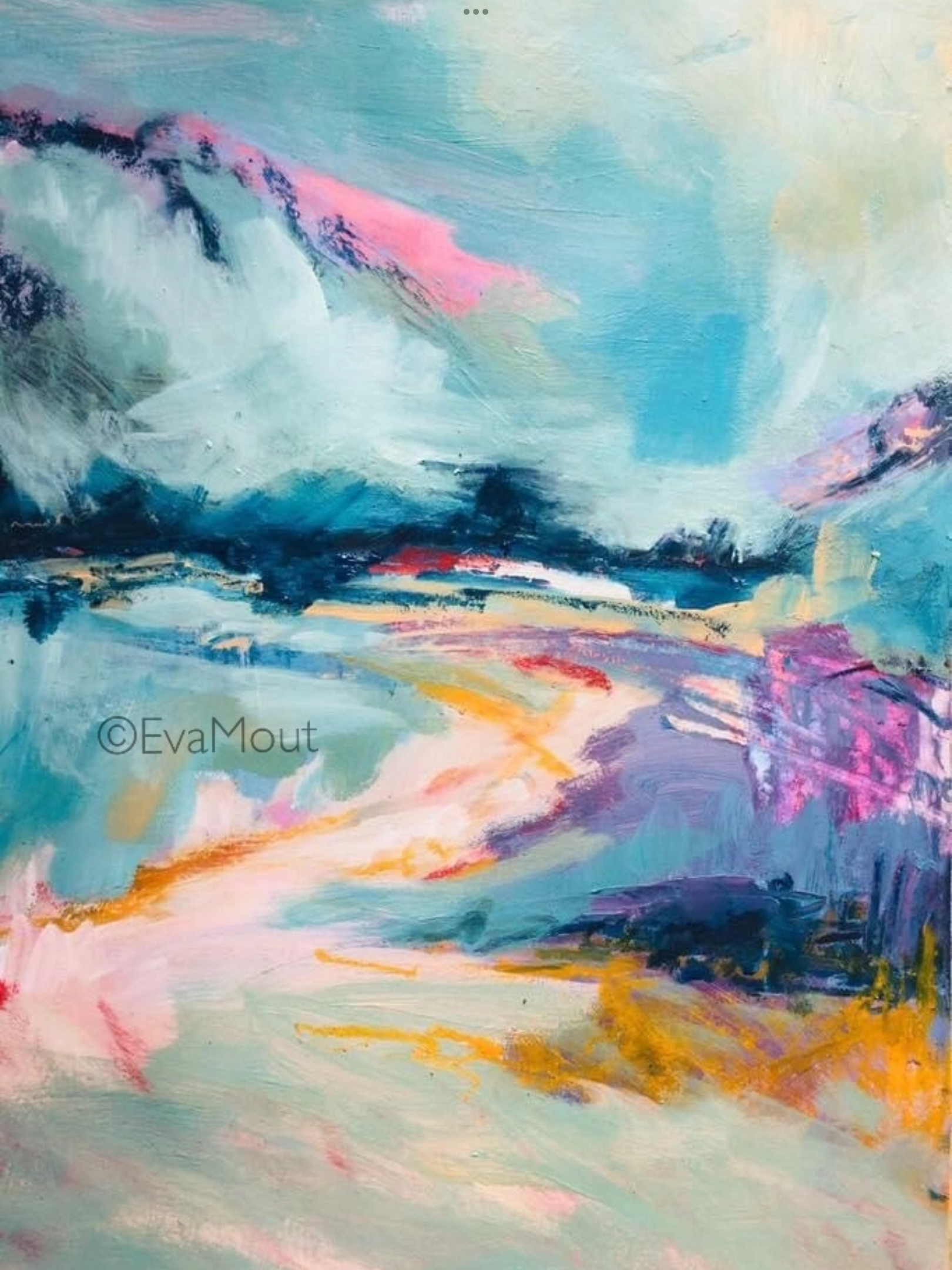10 Tips for keeping your Painting loose and alive!
One of the visual problems some artists have, is that they find it hard to keep their painting or drawing ‘alive’. As an artist, you want your painting to look ‘just so’, so you want to give the problem areas all your attention, time and energy. But this is a dangerous thing, because you can can end up in fiddling and losing the overview of the complete image. This overload of attention can kill the spirit of the overall artwork.
An artwork needs to breathe! But it’s not easy to recognise the moment when you need to stop painting and drawing. Nor to see what parts of the canvas to leave alone! It is almost impossible not to touch certain areas that are actually perfect! This perfectionism doesn’t help you to keep your artwork fresh and alive. Your artwork needs to breathe. In order to achieve this, you’ll need to behave in a way that ensures a fresh look, lively movements and a bit of bravery.
‘Summer’s Day 3’, acrylics on paer, A3
I have struggled with this problem for a long time too, but over the years I have developed some tricks to overcome this. I have summed up some tips and tricks for you to help you to keep your artworks loose and alive! Here we go!
Work on a bigger canvas. This will help you make bigger arm movements and prevent you from fiddling in one little corner. Also you can speed up your movements, because there is less danger of ruining small areas.
Use a bigger brush. When you paint on a bigger surface, you’ll need to adjust your brushes to the size of the canvas. Using bigger brushes will help you to prevent ending up worrying about the details. With a big brush, this simply is impossible. Try and concentrate on the overall layout first, the background. You might choose to add some details later, if you want to, but only after the background is done.
Use arm movements. Don’t work from the wrist, but use your whole arm to steer your brush. It makes all the difference!
When you’re sitting down, stand up! This has a funny effect on how you feel about your way of painting. You will see that you will feel more brave and in charge. Try it!
Play some upbeat music. This will help you let go of your control a bit and to paint with gusto. Use speed! Don’t think so much! You can use the rhythm of the music to move your brush. Also the choice of your colours will be influenced by the music you’re listening to. You will learn that making different choices than you’re used can teach you a lot.
Walk away now and then. Take breaks! You need to ‘unsee’ your work and then after a while see it with a fresh look. you will notice that your work will look very different to you, after you have done the groceries. Sometimes it suddenly gets very clear how to solve that difficult visual problem you had no answer to before,
Take distance from your work. Step back. Lay your painting on the floor. Hang it on the wall and take a view from a distance. As long as you stay too close to your work physically, you won’t see the overall picture and solving problems will be much harder.
Don’t use too many colours, but be bold. It is hard to make a balanced and interesting picture with too many colours competing with each other in chaos. Try and settle for four or five colours and play with their different shades instead. Less is more! You can also choose to combine different mediums, for instance crayon on ink or on acrylics. Because you have limited your range of colours, the image will still look balanced.
Use a mirror. Hold your work in front of a mirror to change your perspective. This is a shocking thing to do, but it will confront you with the problems you didn’t want to face or just didn’t notice. Again, a fresh look will lead to fresh solutions…..
Know when to stop! This final one is the hardest things to do of all. It is very difficult to know when your artwork is finished. Keeping at it for too long can kill everything you have work on so hard. (And we all know how it feels when it ends up in the bin after a day of work!) Also, it is dangerous to work for too long, because overdoing it can suffocate all those areas in your painting that felt so alive at first. Again, better walk away and come back after a while.
‘Bleak Beauty 2’, in on paper, A4
That was it! I hope I was able to help you with sharing the things I have learned over the years. Additional ideas, Comments and questions are very welcome indeed!
Happy painting and stay safe!
Eva Mout, Ursus Art

